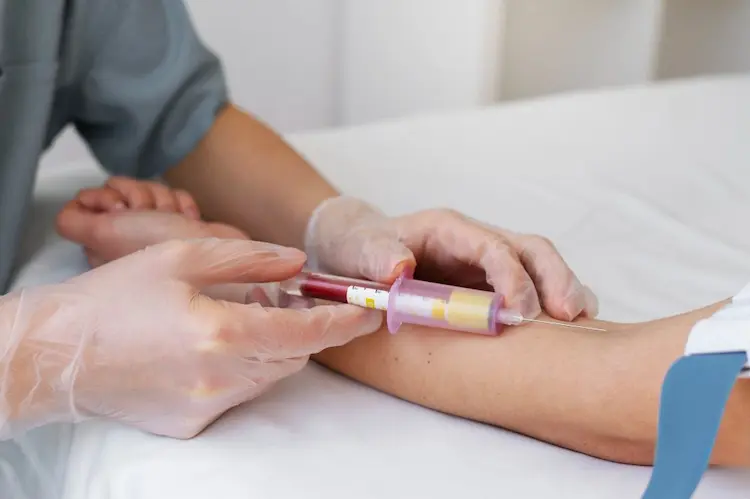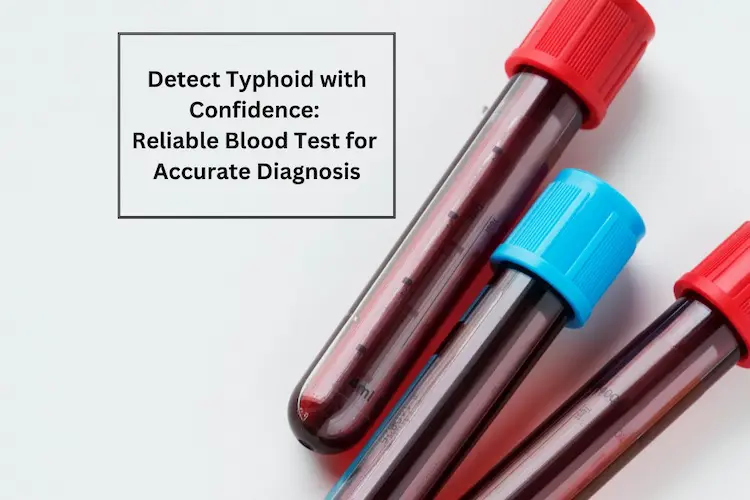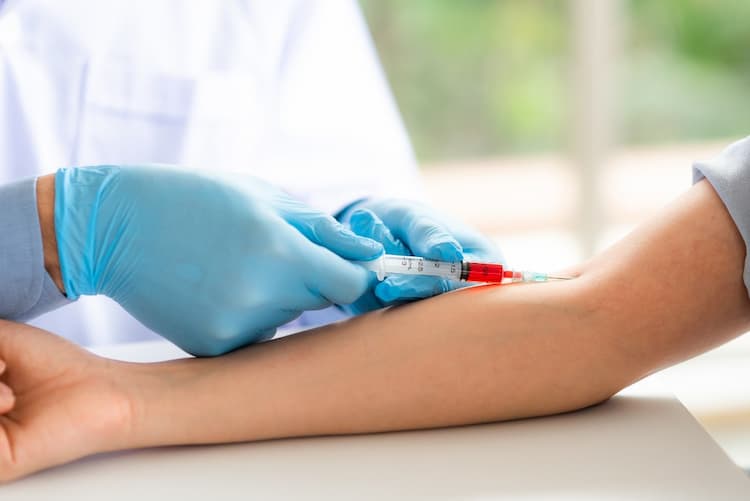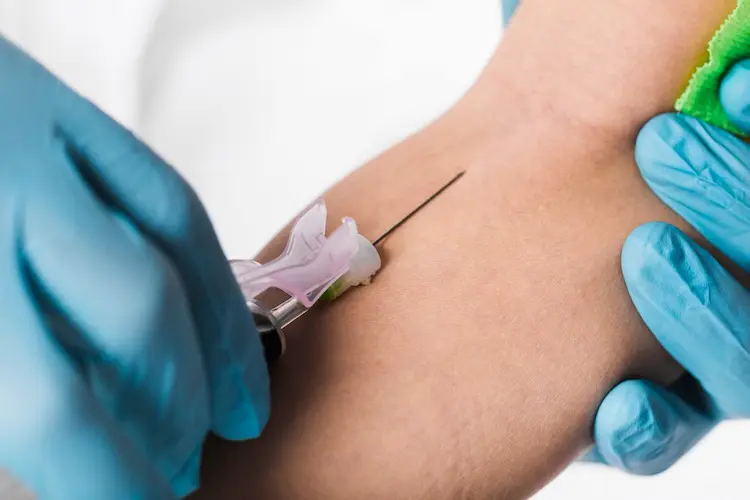What Are MCH Levels?

Medically Reviewed By
Dr. Ragiinii Sharma
Written By Prekshi Garg
on Aug 7, 2022
Last Edit Made By Prekshi Garg
on Mar 17, 2024
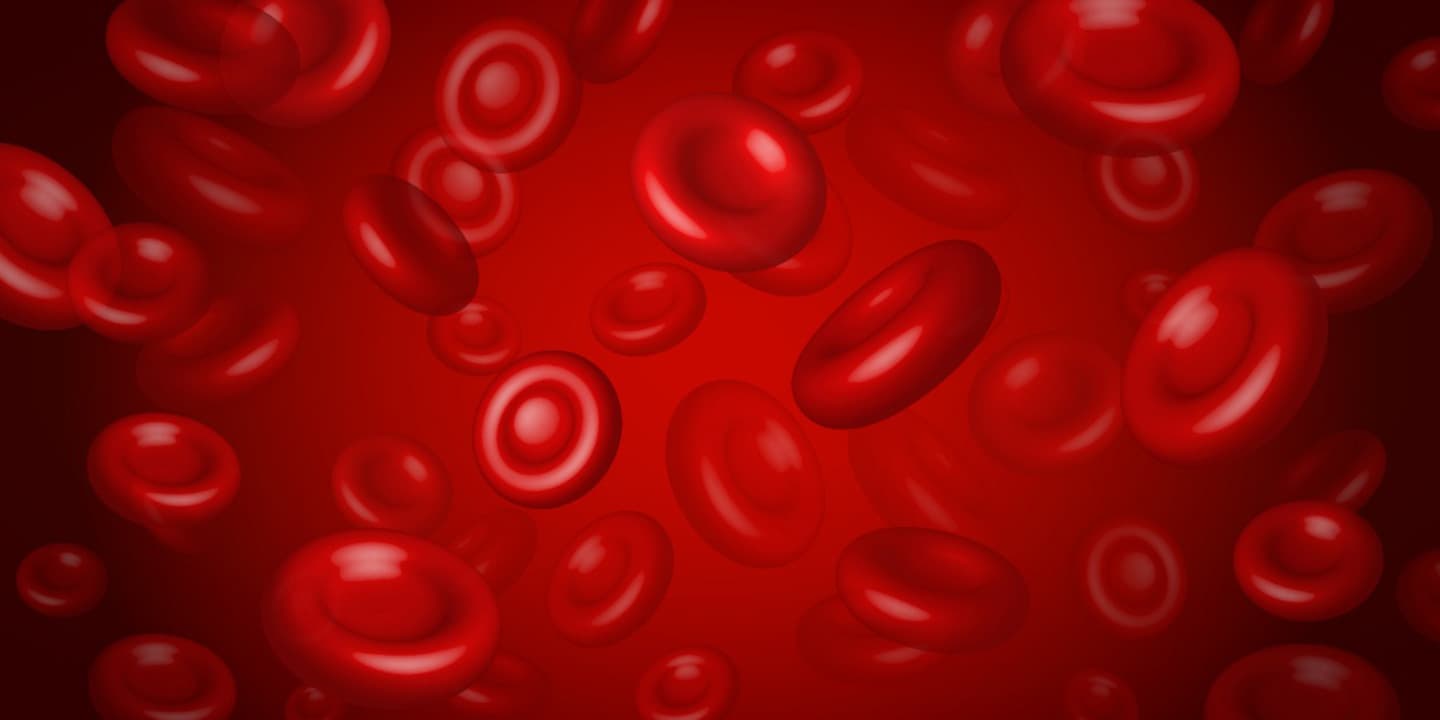
Blood is a conjugate of plasma and blood cells, majorly including red blood cells (RBCs), white blood cells (WBCs), and platelets.
RBCs are a special type of blood cell with a distinguished function to carry oxygen from the lungs to all body parts.
RBC’s primary constituent is an oxygen-carrying protein called “Haemoglobin”. MCHC is medically known as “Mean Corpuscular Haemoglobin Concentration” for lab reports and tests. It specifically defines the physical characteristics of the red blood cells in an individual. Haemoglobin gives the blood its characteristic red colour while also supporting the development and functioning of the organs and tissues.
MCHC in blood tests measures the amount of haemoglobin in a single RBC as it can relate to the total volume in the cell. It helps assess the blood’s ability to carry oxygen along with other RBC indices. It also helps detect blood disorders related to RBCs, like anaemia.
Why do you need an MCHC evaluation?
The primary purpose of an MCHC test or mean corpuscular haemoglobin concentration is to check if red blood cells are carrying the required amount of haemoglobin. MCHC helps evaluate the RBC’s function while checking for anaemia and other blood disorders. The MCHC test in Hindi has the same pronunciation and meaning.
When the body does not produce enough healthy RBCs, the blood is deficient in oxygen, and so are the tissues and organs, leading to a common blood condition called anaemia. Anaemia and be mild to severe depending on the haemoglobin levels in the blood. Some of the common signs of anaemia that may raise a need for MCHC evaluation are:
- Cognitive problems
- Lack of concentration and thinking
- Numbness in the hands and feet
- Headaches
- Irritability or agitation
- Appetite loss
- Breathing difficulty while performing simple tasks
- Pale skin
- Dizziness or lightheadedness
- Sore tongue with possible redness
- Increased menstrual bleeding in menstruating women
- Chipping or breaking of nails
- The white portion of the eyes turned blue
- Desire to eat ice and dirt (non-edible things)
Indices evaluated during the test?
The MCHC in blood tests simply illustrates the amount of space occupied by haemoglobin in a single RBC cell. Haemoglobin is an essential oxygen-carrying protein that helps transport oxygen from the lungs to different body tissues and organs. It also carries back the carbon dioxide to the lungs.
The MCHC test becomes a more comprehensive test, when performed and compared with different RBC characteristics, such as shape, size, and quality. The RBC characteristics evaluated during an MCHC test include:
- Mean corpuscular haemoglobin (MCH)
- Mean corpuscular volume (MCV)
- Mean corpuscular haemoglobin concentration (MCHC count)
- Red blood cell distribution width (RDW)
Result Interpretation of MCHC in blood test
MCHC interpretation is with comparison to its normal ranges relating to the other RBC indices. The MCHC levels in blood tests are calculated in grams per deciliter (g/dL). And According to the American Board of Internal Medicine, the MCHC blood test normal range is 33 to 36 g/dL. The reference ranges of other RBC indices are mentioned below.
| RBC indices | Reference Ranges |
| Mean corpuscular haemoglobin (MCH) | 27 to 31 picograms/cell |
| Mean corpuscular volume (MCV) | 80 to 100 femtoliter |
| Red blood cell distribution width (RDW) | 12% to 15% |
| Mean corpuscular haemoglobin concentration (MCHC) | 32 to 36 grams/deciliter (g/dL) or 320 to 360 grams per litre (g/L) |
MCHC test results can indicate one of the following possibilities.
- MCHC blood test: Low: MCHC low means hypochromic anaemia, indicating acute iron deficiency.
- MCHC normal range: If the results are within the normal range and the person is having anaemia symptoms, the condition is called normochromic anaemia, which can be due to sudden blood loss, kidney failure, heart failure, or a rare type of anaemia (aplastic anaemia- the body does not produce enough RBCs).
- MCHC blood test: High: Higher than normal MCHC levels indicate hyperchromic anaemia caused due to spherocytosis (a rare hereditary condition characterised by abnormally shaped RBCs), or RBC agglutination (abnormal clumping of RBCs).
MCHC test is not an individual test instead interpreted and compared with other RBC indices for better diagnosis of a condition. Your physician can help you understand your condition better with the comprehensive RBC evaluation test result.
However, depending on the MCHC test results, your physician can recommend additional tests for further evaluation.
Frequently Asked Questions
-
What happens if MCHC is low?
If the MCHC levels are low, the blood would have low oxygen content, and body tissues or organs would get very less oxygen to carry on their activities. The body tissues' deficit of oxygen, cannot get rid of the carbon dioxide and eventually die, causing life-threatening situations.
-
What happens if the MCHC count is high?
Higher than normal MCHC levels indicate more haemoglobin concentration in the blood and cause hypochromia (dark-colored RBCs). Commonly seen in people who are addictive smokers, high MCHC levels can also be due to a cold agglutinin disease.
-
What causes low MCHC?
One of the primary causes of low MCHC levels is an iron deficiency- when the body cannot absorb iron efficiently. Iron deficiency can be a consequence of Crohn’s disease, gastric bypass surgery, excessive blood loss during menstruation or peptic ulcers, and hemolysis (RBC destruction over time).
Conclusion
The MCHC blood test is usually a part of the routinely done complete blood count (CBC test). The CBC test evaluated various blood parameters, including the RBC indices and MCHC. MCHC blood test results below the normal range can be due to iron deficiency in the body, where the cells receive less iron than required.
And the higher than normal MCHC shows that the body has deeper coloured RBCs and hypochromia. The MCHC test is not a stand-alone test to give a comprehensive blood evaluation result. It is often assessed with other blood characteristics, including the RBC indices.
A physician or health care service provider can assess the MCHC values better and recommend further tests and examinations if needed.
Leave a comment
1 Comments
Tirupati A Jadhav
Jul 12, 2023 at 5:36 AM.
My himoglobin is 11.2 , mcv-71.85, mch- 22.31, mchc- 31.05, please suggest me what care I should take
Myhealth Team
Jul 13, 2023 at 10:34 AM.
Hi, Based on your hemoglobin level of 11.2 g/dL, low MCV, MCH, and MCHC values, it indicates potential anemia. Here are some basic care suggestions: 1. Consult a healthcare professional for further evaluation and personalized advice. 2. Follow a balanced diet rich in iron, vitamin B12, and folate, including foods like leafy greens, lean meats, legumes, and fortified cereals. 3. Consider iron supplementation if recommended by your healthcare professional. 4. Ensure adequate rest and prioritize quality sleep. 5. Attend follow-up appointments to monitor your progress and make any necessary adjustments to your care plan. Thankyou
